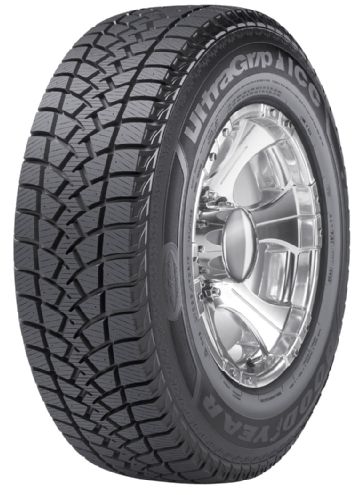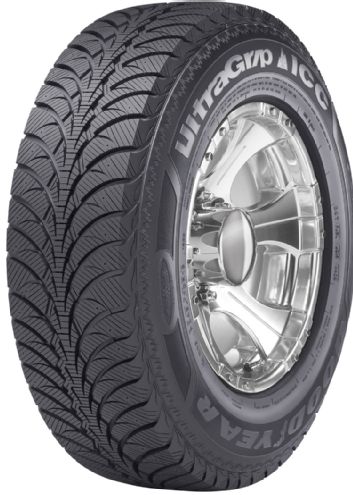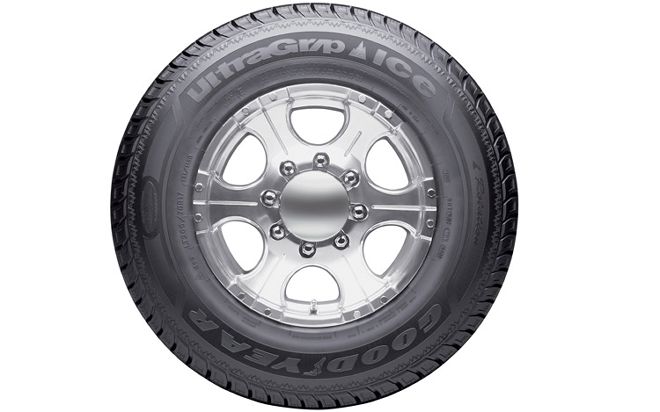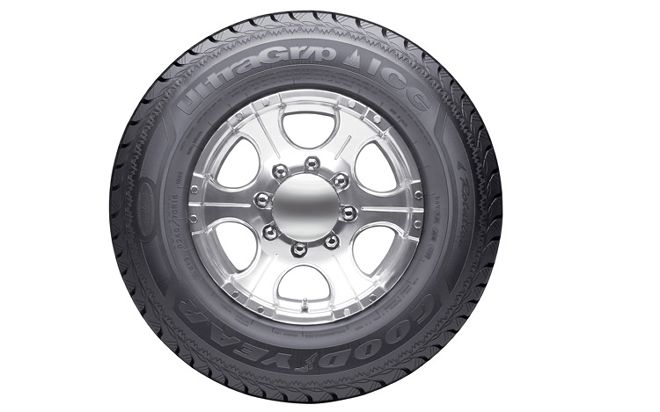"Your jacket, sir," a young lady from Goodyear Tire says, handing me a nicely folded, bulky, triple-layer coat.

| Goodyear Ultra Grip Ice WRT SUV Winter Tire Test Vehicle
"Thanks, but are you serious?" I reply, bug-eyed. I've just touched down in sandy Fort Walton Beach, Florida, a palm-lined oasis known for clean beaches and tropical weather. The airport's exterior LED thermometer says it's 91 degrees.
"You'll be thanking me in a few hours," she says smiling. Maybe I should have packed those snow gloves back in L.A.
Goodyear Tire, is shuttling a herd of international journalists to the McKinley Climatic Laboratory, said to be the world's largest environmental testing chamber, at Eglin Air Force Base. Since 1947, the lab has served as the U.S. Armed Forces' premier extreme weather-testing facility. The six-chamber location tests the climatic durability of nearly everything heading into the world's warzones, from bunkers, grenades, and missiles, to clothing, vehicles and airplanes. It's also used as a private sector product proving ground. We'll spend the next hour in the McKinley laboratory's 65,000-plus square-foot main chamberm getting acquainted with Goodyear's new Ultra Grip Ice WRT tires in 15 degree Fahrenheit weather-that's minus 9 degrees Celsius for you non-Americans.

| Goodyear Ultra Grip Ice WRT SUV Winter Tire On The Vehicle
It looks as if Reynolds Wrap decorated the place: Giant bolted silver aluminum panels cover each wall for optimal temperature retention. Overhead are steel trusses with adjustable lighting and crane fixtures. One-and-a-half-foot thick concrete provides a surface for the fresh snow and ice. The building is so sturdy that when the toughest of hurricanes rolls into town, critical military equipment is stored inside.

| Goodyear Ultra Grip Ice WRT Truck Winter Tire In The Snow
As we admire the shiny structure, a McKinley engineer explains that the lab's advanced air conditioning can cool the building to minus 65 degrees Fahrenheit, or heat it up to an astounding 165 degrees. Then there are the weather simulations: Snow, ice, winds, blowing sand/dust, and extreme humidity can be created for ideal, super-harsh conditions.

| Goodyear Ultra Grip Ice WRT Truck Winter Tire Front View
Goodyear uses the lab when specific weather conditions are required, as testing in cold weather in New Zealand, Minnesota, and Michigan (among many other places) is largely unpredictable. A week prior to our arrival, McKinley scientists and engineers dialed down the A/C to prepare for today's tire demonstration. Zambonis and snowplows ensure the powder and ice are as realistic as possible.
At 15 degrees, most of our electronics-and our appendages-are immediately rendered useless. It's the type of cold that truly tests that weatherproof claim of R.E.I. clothing, not to mention rubber tires. It is the chilliest climate-manufactured or natural-I've experienced. And after walking through the 18-inch-thick Sub-Zero-esque door leading into the massive hangar, I feel like a shivering, awestruck Jamaican bobsledder.

| Goodyear Ultra Grip Ice WRT Truck Winter Tire Rear View
In between shivers, we take back-to-back rides in two new Ford F-250 Super Duties. One truck is equipped with Ultra Grip Ice WRTs, and the other rides on Bridgestone Blizzak W965 tires. The Ultra Grip Ice WRT (short for Winter Reactive Technology) is Goodyear's first dedicated winter tire for SUVs and light trucks and range in size from 225/70-16 to 275/70-18.
-

-

Each vehicle type (SUV and light trucks) gets a unique tread pattern, with every WRT tire utilizing the same snow and ice technologies, such as 2D blades in the center ribs (for improve grip during start and stop maneuvers) and 3D TredLock blades on outer shoulders (for increased handing ability and steering response while traversing ice and snow). A bespoke rubber compound resists hardening in the coldest of temperatures, while optional studs bite into the slipperiest ice. Designers included a rim protection flange to keep expensive wheels looking new in case of a minor curb collision.

| Goodyear Ultra Grip Ice WRT SUV Winter Tire Snow Pattern
After a few feet riding shotgun, the difference in grip between the two sets of tires is clear. On snow, the truck equipped with Blizzaks slides as its driver yanks the steering wheel back and forth in search of grip. The Goodyear-wearing Ford, on the other hand, slides minimally, remaining controllable. During 8-mph panic stops on ice, the Ultra Grips again outperformed the Blizzaks with repeated shorter stopping distances.

| Goodyear Ultra Grip Ice WRT Truck Winter Tire Snow Tread Pattern
Finally, thaw time has arrived. We emerge from the chamber into the bright, hot Floridian sun. Going from one climatic extreme to the other in a matter of seconds is quite a shock. Jackets off, it takes 10 minutes for our bodies to readjust.
Next up on our agenda is wet-weather driving. On a makeshift, hose-doused course next to the McKinley Lab, Goodyear's engineers line up two Chevrolet Tahoes with the Bridgestone Blizzaks and Goodyear WRTs wrapping the wheels. Around the pseudo-autocross course, the Goodyear rubber once again proves its prowess and versatility. The tires aren't putting down high g-force lateral grip numbers, but they keep the heavily laden SUV securely planted, and during a full ABS panic stop, they reign in speed quicker than the Bridgestones.

| Goodyear Ultra Grip Ice WRT Truck Winter Tire On The Test Vehicle
The tire test was short and not held in real-world settings, and only one competitor was in attendance, but the Goodyear Ultra Grip Ice WRTs did impress. If you live in a region where snow-packed, ice-covered winters are the norm, and you drive a truck or SUV, check them out for yourself.



